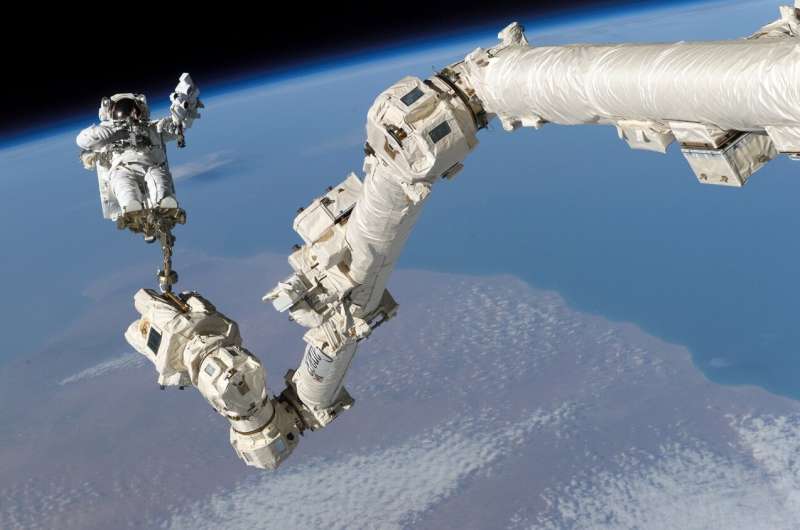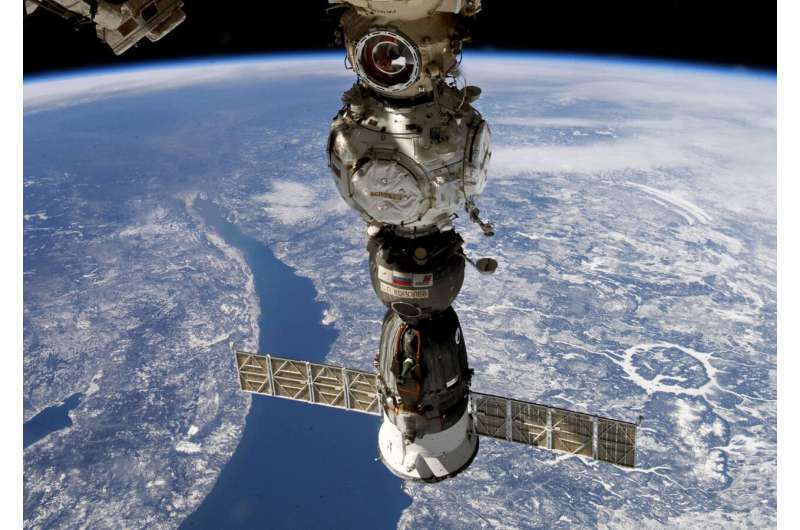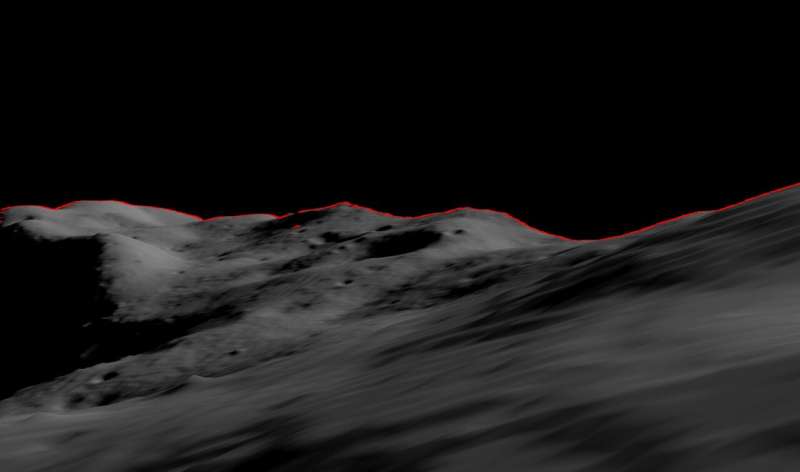
Copernical Team
Building a powerhouse in deep space
 Gateway will be humanity's first space station in lunar orbit and serve as an essential element of NASA's Artemis missions. As astronauts live and work on Gateway to enable sustained exploration and research in deep space, their efforts will be made possible by the Power and Propulsion Element (PPE). A foundational component of the lunar outpost and the most powerful solar electric spacecraft ev
Gateway will be humanity's first space station in lunar orbit and serve as an essential element of NASA's Artemis missions. As astronauts live and work on Gateway to enable sustained exploration and research in deep space, their efforts will be made possible by the Power and Propulsion Element (PPE). A foundational component of the lunar outpost and the most powerful solar electric spacecraft ev First deep space biology experiment begins, follow along in real-time
 NASA's BioSentinel has carried living organisms farther from Earth than ever before - more than one million miles. Aboard the shoebox-sized CubeSat are microorganisms, in the form of yeast - the very same yeast that makes bread rise and beer brew.
On Dec. 5, BioSentinel was 655,730 miles from Earth when the BioSentinel team at NASA's Ames Research Center in California's Silicon Valley sent
NASA's BioSentinel has carried living organisms farther from Earth than ever before - more than one million miles. Aboard the shoebox-sized CubeSat are microorganisms, in the form of yeast - the very same yeast that makes bread rise and beer brew.
On Dec. 5, BioSentinel was 655,730 miles from Earth when the BioSentinel team at NASA's Ames Research Center in California's Silicon Valley sent US space entities examine future space technology
 Seventy professionals from the space ecosystem gathered for the Space Futures Workshop, Nov. 29-30, to examine future technologies and forge a path towards ensuring the U.S. maintains its advantage in the increasingly congested and contested space domain.
Convened by NewSpace New Mexico, the event held at the University of Colorado Boulder, marked the fifth time that U.S. Space Force leade
Seventy professionals from the space ecosystem gathered for the Space Futures Workshop, Nov. 29-30, to examine future technologies and forge a path towards ensuring the U.S. maintains its advantage in the increasingly congested and contested space domain.
Convened by NewSpace New Mexico, the event held at the University of Colorado Boulder, marked the fifth time that U.S. Space Force leade Corralling the devices capable of operating in the cold of deep space

The future of electric aircraft and deep space missions will rely on our ability to develop electrical and electronic components that can operate at the very low temperatures of the upper atmosphere and the cryogenic temperatures of space. A review of such technology is presented in the International Journal of Powertrains. The review looks specifically at semiconductor devices, passive components, and superconducting devices that operate at very low temperatures.
Mustafeez Ul-Hassan, Yalda Azadeh, Asif Imran Emon, and Fang Luo of the Department of Electrical and Computer Engineering at Stony Brook University, New York, U.S., point out that in terms of aeronautics and space travel there is a pressing need to usurp pneumatic, hydraulic, and mechanical systems with electrical components.
In terms of aircraft, such components will operate at the low temperatures of high-altitude flight, but also benefit from being held at cryogenic temperatures in terms of improving their efficiency. Indeed, the development of superconducting technology that by necessity operates at such temperatures would not only make electric aircraft more feasible and improve space travel option but improve the generation efficiency of wind turbines.
Russia may expedite launch of next space capsule after leak

NASA developing AI to navigate the lunar surface using landmarks

Much like how familiar landmarks can give travelers a sense of direction when their smart phones lose their lock on GPS signals, a NASA engineer is teaching a machine to use features on the Moon's horizon to navigate across the lunar surface.
Webb glimpses field of extragalactic PEARLS, studded with galactic diamonds
 Image:
Webb glimpses field of extragalactic PEARLS, studded with galactic diamonds
Image:
Webb glimpses field of extragalactic PEARLS, studded with galactic diamonds First 2 O3b mPOWER satellites launched
 SES reports that the first two O3b mPOWER satellites were successfully launched into space by a SpaceX Falcon 9 rocket from Cape Canaveral Space Force Station in Florida, United States, at 5:48 pm local time.
Built by Boeing and designed to deliver unprecedented performance with first-of-its-kind software-driven payload, O3b mPOWER is SES's second-generation medium earth orbit (MEO) system
SES reports that the first two O3b mPOWER satellites were successfully launched into space by a SpaceX Falcon 9 rocket from Cape Canaveral Space Force Station in Florida, United States, at 5:48 pm local time.
Built by Boeing and designed to deliver unprecedented performance with first-of-its-kind software-driven payload, O3b mPOWER is SES's second-generation medium earth orbit (MEO) system JAXA startup Tenchijin announces funding from JAXA
 Tenchijin is pleased to announce the investment from the Japan Aerospace Exploration Agency ("JAXA"). This is the first ever investment of JAXA's capital investment into business.
This funding will enable Tenchijin to enhance its product capabilities and expand its usage to yield direct benefits for society and businesses on Earth. Since incorporation in 2019, Tenchijin has been developing
Tenchijin is pleased to announce the investment from the Japan Aerospace Exploration Agency ("JAXA"). This is the first ever investment of JAXA's capital investment into business.
This funding will enable Tenchijin to enhance its product capabilities and expand its usage to yield direct benefits for society and businesses on Earth. Since incorporation in 2019, Tenchijin has been developing AST SpaceMobile and NASA sign agreement to improve spaceflight safety
 AST SpaceMobile reports that its subsidiary, AST and Science, LLC, and NASA recently signed an agreement to formalize both organizations' dedication to maintaining and improving safety in the shared environment of space.
The Space Act Agreement formalizes the prompt, detailed, and open sharing of information between AST SpaceMobile and NASA, enabling a deeper level of coordination, coopera
AST SpaceMobile reports that its subsidiary, AST and Science, LLC, and NASA recently signed an agreement to formalize both organizations' dedication to maintaining and improving safety in the shared environment of space.
The Space Act Agreement formalizes the prompt, detailed, and open sharing of information between AST SpaceMobile and NASA, enabling a deeper level of coordination, coopera 
